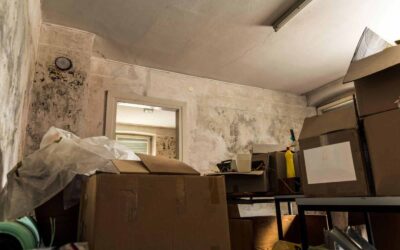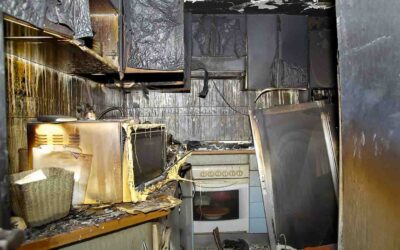Of all the problems that can plague a home, indoor mold growth is one of the most destructive, not to mention dangerous. Starting invisibly in dark, hidden areas, mold growth can quickly spread out of control and devastate your property, damaging not only the walls and paint but also the flooring, carpeting, and even the wooden frame of the house itself. As it grows, mold can also create major health hazards, exacerbating allergies as well as contributing to more serious illnesses.
Biodynamic is located in Portland, Oregon, where mold is a constant concern as a result of the damp climate. As a restoration and industrial cleaning company, we specialize in the mold removal Portland residents depend on, and we’ve sadly seen a lot of beautiful homes require extensive repairs as a result of unchecked fungal growth.
That’s why we’re offering these tips for keeping your home mold-free. By learning to identify, eliminate, and prevent mold growth, you’ll save a great deal of money on repair costs while also enjoying a healthier living environment.
What Is Mold?
What we call “mold” actually refers to the growth created by thousands of different species of fungi, which reproduce by way of airborne microbial spores. These spores are released into the environment and land anywhere and everywhere in their search for a place to take hold. When it comes to choosing a spot to grow, mold isn’t particularly picky: it can thrive in almost any space with a source of food and moisture.
For homeowners, this means it’s most frequently found in kitchens, bathrooms, and laundry rooms. While mold can take hold on almost any organic material, wood is particularly vulnerable due to its porous nature and tendency to absorb moisture. The mold consumes the wood as it grows, weakening it while also producing new mold spores to release into the environment.
These airborne spores are what makes mold such a health hazard, as breathing them in can create an immune system reaction that leads to asthma and allergies. In more severe cases, mycotoxins from mold can contribute to neurological problems, including memory loss and dementia symptoms.
Identifying Mold in Your Home
As we mentioned above, when mold first begins to grow in your home, it often does so invisibly, leaving no obvious outward signs. This is because the ideal environment for mold is in damp areas, which are often hidden from view in homes, such as under bathroom and kitchen sinks. Often, the first sign of mold growth you’ll notice is a noticeable decline in air quality, signaled by the inhabitants of the home beginning to suffer from seemingly unexplained health issues, such as allergy symptoms, headaches, breathing difficulty, or even a skin rash.
Occasionally, there may be other signs that mold is growing somewhere in your home. While it doesn’t always have an odor, extensive mold growth can sometimes be heralded by a dank, musty smell, or one that is similar to that of rotting food. You may also see visual indicators: since mold requires a source of moisture for growth and sporation, large water stains on walls or ceilings can indicate mold contamination.
If you suspect a mold infestation somewhere in your home, you may have to do some investigating to locate the source. Check the attic, underneath sinks, and inside of closets for smells and water stains.
Taking Preventative Measures
The best method for controlling the growth of mold in your home is to take preventative measures. By the time you notice an advanced infestation, it will probably already be too late to avoid expensive repairs. That’s why it’s critical to stop the growth of mold before it begins. Doing so is a matter of eliminating the conditions that allow mold to spread out of control.
Since mold requires damp conditions to thrive, humidity is its friend. So controlling the growth of mold is a matter of controlling the spread of moisture in your home. It’s also important to keep high-risk areas dry and to perform maintenance on gutters, roofs, siding, pipes, and so on to reduce the risk of water leaking in.
Moisture Control Strategies
In Portland, we’re particularly vulnerable to mold growth because of the moist climate. The regular rainfall means that water often leaks into homes. Repairing leaks immediately once they’re identified is a major part of mold prevention. For instance, damaged rooftops should be repaired as soon as possible. Flashing, trim, and caulking around doors and windows should be checked periodically to ensure there are no vulnerable spots. To prevent groundwater from entering basements or crawlspaces, ensure landscaping directs water away from your home and that cracks or other damage are repaired immediately.
Homeowners should also invest in preventative maintenance for their plumbing. Even a single leaky pipe can lead to an out-of-control mold infestation that can result in a staggering repair bill.
Proper ventilation is another important factor in the control of moisture in the home. If humid air isn’t properly circulated out of the home, it will eventually condense in vulnerable spots, such as around windows and exterior doors. This will once again create conditions that allow mold growth to take hold. Make sure your vents are clean, run fans as needed, and invest in a dehumidifier if necessary. Check that bathroom, kitchen, and laundry room fans are vented outside the home.
Removing Mold Once It’s Taken Hold
If you do discover mold in your home, you may be able to remove it simply through cleaning. A solution of water and detergent will destroy the fungal structures and eliminate mold spores sitting on a surface. However, the EPA suggests a homeowner only take on projects of 10 square feet or less.
A more extensive infestation, however, may require professional cleaning or mold removal services. Severe mold damage caused when mold has invaded large amounts of porous wood and other vulnerable materials must be remediated and repaired to prevent the damage from spreading further.
If you think you have major mold growth in your home, you’ll need the best mold removal Portland has to offer. Contact Biodynamic to discuss mold removal and remediation. Our experts will remove all the materials impacted by mold to ensure your home is once again safe, healthy, and clean.


